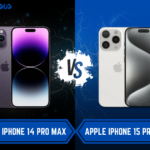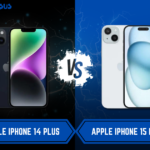JBL BAR 9.1 VS JBL BAR 1300
When it comes to high-quality soundbars, JBL is a name that stands out in the audio industry. Today, we’re comparing two of their top-tier models: the JBL BAR 9.1 and the JBL BAR 1300. Both these soundbars offer immersive audio experiences, but they have distinct features that set them apart. Let’s dive into a detailed comparison to help you decide which one might be the best fit for your home entertainment setup.
Main Specifications Comparison Table
| Feature | JBL BAR 9.1 | JBL BAR 1300 |
|---|---|---|
| Channels | 9.1 | 11.1.4 |
| Sound Pressure Level | Not specified | Not specified |
| Sound Modes | Multiple (exact modes not specified) | Multiple (exact modes not specified) |
| LED Indicator | Yes | Yes |
| Keypad | Yes | Yes |
| HDMI ARC | Yes (eARC) | Yes (exact type not specified) |
| Bluetooth | Version 4.2 | Version 5.0 (main bar), 5.2 (surround speakers) |
| Optical | Yes | Yes |
| USB Playback | Yes (US version only) | Yes (US version only) |
| 3.5mm AUX Line-in | Not specified | Not specified |
| Audio Format Support | MP3 | MP3 |
| Subwoofer Type | Wireless | Wireless |
| Subwoofer Dimension (W x H x D) | 305 x 440 x 305 mm | 305 x 440.4 x 305 mm |
| Soundbar Audio Power (Watts) | 400W | 650W |
| Soundbar Driver Dimensions (W x H x D) | 884 x 62 x 120 mm | 1000 x 60 x 139 mm |
Full Specifications:JBL BAR 9.1
Feel like you’re right in the scene with 3D surround sound
The JBL Bar 9.1 soundbar brings audio experience of a movie theater into your home with two detachable surround speakers and the added punch of Dolby Atmos® and DTS:X™ 3D sound. With 820 watts of total system power, you can enjoy every Oscar-worthy performance through powerful, crystal-clear audio. Turn up the 10’’ subwoofer for pulse-pounding bass or turn it down and relax with Chromecast and AirPlay music streaming. Immerse yourself in the latest blockbuster or re-live your favorite movie or sport scenes. The most incredible home cinema sound experience is here.
- Power supply
- 100 – 240VAC, ~ 50/60Hz
- Battery charge time
- 3 hours
- Total speaker power output (Max. @THD 1%)
- 820 W
- Main Soundbar output power (Max. @THD 1%)
- 400
- Surround speakers output power (Max. @THD 1%)
- 2 x 60W
- Subwoofer output power (Max. @THD 1%)
- 300
- Soundbar transducer
- 4×racetrack drivers + 2 × up-firing full-range drivers+3 × 0.75” (20mm) tweeter
- Surround transducer (per piece)
- Up-firing full-range driver + 0.75” (20mm) tweeter
- Subwoofer transducer
- 10″
- Operating temperature
- 0°C – 45°C
- Standby for Soundbar (when all wireless connections are deactivated)
- < 0.5 W
- Networked standby (Soundbar)
- < 6.0 W
- Networked standby (Subwoofer)
- < 2.0 W
- Time to standby
- <10 minutes
- HDMI In
- 1
- HDMI eARC
- 1
- HDMI HDCP version
- 2.3
- Connections
- 1 Optical, Bluetooth, Chromecast, AirPlay2, USB
- Soundbar dimensions (WxHxD)
- 884 x 62 x 120 (mm), 34.8” x 2.4” x 4.7”
- Detachable surround speaker, per piece
- 173 x 60 x 120 (mm) / 6.8” x 2.4” x 4.7”
- Subwoofer dimensions (WxHxD)
- 305 x 440 x 305(mm) / 12.0″ x 17.3″ x 12.0″
- Soundbar weight
- 3.64 kg/ 8.0 lb
- Detachable surround speaker
- 0.72 kg x 2/ 1.6 lb x2
- Subwoofer weight
- 11.10 kg / 24.5 lb
- USB port
- Type A
- USB rating
- 5 V/ 500 mA
- Supported file format
- MP3
- MP3 codec
- MPEG 1 Layer 2/3, MPEG 2 Layer 3, MPEG 2.5 Layer 3
- MP3 sampling rate
- 16 KHz – 48 KHz
- MP3 bitrate
- 80 kbps – 320 kbps
- USB Port
- USB playback is available in US version. For other versions, USB is for Service only
- Bluetooth version
- 4.2
- Bluetooth profile
- A2DP V1.2/ AVRCP V1.5
- Bluetooth frequency range
- 2402MHz-2480MHz
- Bluetooth Max. transmitting power
- 13dbm (EIRP)
- Modulation Type
- GFSK, π/4 DQPSK, 8DPSK
- Wi-Fi network
- IEEE 802.11 a/b/g/n/ac (2.4GHz/5GHz)
- 2.4G Wi-Fi frequency range
- 2412 – 2472 MHz (2.4GHz ISM Band, USA 11 Channels, Europe and others 13 Channels)
- 2.4G Wi-Fi Max. transmitting power
- 20 dBm (EIRP)
- Modulation Type
- DBPSK, DQPSK, CCK, QPSK, BPSK, 16QAM, 64QAM
- 5G Wi-Fi frequency range
- 5.15 – 5.35 GHz, 5.470-5.725 GHz, 5.725 – 5.825 GHz
- 5G Wi-Fi Max. transmitting power
- 22 dBm (EIRP)
- Modulation Type
- QPSK, BPSK, 16QAM, 64QAM, 256QAM
- 5G Wireless frequency range
- 5180.0 – 5240.0MHz (Except Europe), 5725.0 – 5825.0MHz
- 5G Max. transmitting power
- 13 dBm (EIRP)
- Modulation Type
- QPSK
- 1x Main Soundbar
- 2x Detachable wireless surround speakers
- 1x Wireless subwoofer
- Remote control with 2 x batteries
- Power cords (up to 8pcs depending on region SKUs)
- HDMI cable x1
- 2 x L-shape Wall-mount bracket (Main Bar) + 2 x U-shape Wall-mount bracket (for Surround Speakers) kit with screws
- Quick start guide
- Warranty card
- Safety sheet

Full Specifications:JBL BAR 1300
Audio Specifications
Dimensions
Control and Connection Specifications
Battery
What’s in the box?
- 1x Main soundbar
- 2x Detachable wireless surround speakers
- 1x Wireless subwoofer
- Remote control with 2 x batteries
- Power cords (up to 8pcs depending on region SKUs)
- 1 x HDMI cable
- 2 x L-shape wall-mount bracket (main bar) + 2 x U-shape wall-mount bracket (for surround speakers) kit with screws
- 2 x Side caps
- Quick start guide
- Safety instruction and Warranty card
- Wall mount template

Detailed Comparison
Channels
The JBL BAR 1300 takes the lead with its 11.1.4 channel system, offering a more immersive sound experience compared to the 9.1 channels of the JBL BAR 9.1. This difference in channel configuration suggests that the BAR 1300 may provide a more encompassing and detailed soundstage.
Sound Pressure Level
Unfortunately, the specific sound pressure levels are not provided for either model. However, given the higher power output of the BAR 1300, it’s likely to produce a higher sound pressure level, potentially resulting in a more impactful audio experience.
Sound Modes
Both soundbars offer multiple sound modes, although the exact modes are not specified. This feature allows users to customize their listening experience based on the content they’re enjoying, whether it’s movies, music, or games.
LED Indicator and Keypad
Both the JBL BAR 9.1 VS JBL BAR 1300 come equipped with LED indicators and keypads, ensuring ease of use and visual feedback on the soundbar’s status and settings.
HDMI ARC and Bluetooth
While both models support HDMI ARC, the BAR 9.1 specifically mentions eARC support, which allows for higher-quality audio transmission. In terms of Bluetooth, the BAR 1300 has a slight edge with its more recent Bluetooth 5.0 (main bar) and 5.2 (surround speakers) versions, compared to the 4.2 version in the BAR 9.1.
Optical and USB Playback
Both soundbars feature optical inputs and USB playback (for US versions), providing versatility in connection options and media playback.
Audio Format Support
Both the JBL BAR 9.1 and BAR 1300 support MP3 audio format, ensuring compatibility with a wide range of digital audio files.
Subwoofer and Dimensions
Both models come with wireless subwoofers of similar dimensions, with the BAR 1300’s subwoofer being slightly taller. The main soundbar of the BAR 1300 is larger, potentially allowing for more powerful drivers and better sound dispersion.
Audio Power
The JBL BAR 1300 outperforms the BAR 9.1 in terms of audio power, boasting 650W compared to 400W for the main soundbar. This higher power output suggests that the BAR 1300 can deliver louder and potentially more dynamic sound.
Comparison Features
The JBL BAR 9.1 VS JBL BAR 1300 comparison reveals several key differences:
- The BAR 1300 offers a more advanced 11.1.4 channel system compared to the 9.1 channels of the BAR 9.1.
- The BAR 1300 has higher audio power output (650W vs 400W) for the main soundbar.
- The BAR 1300 features more recent Bluetooth versions (5.0 and 5.2) compared to the BAR 9.1 (4.2).
- The BAR 1300 has a larger main soundbar, potentially housing more powerful drivers.
- Both models offer detachable surround speakers, but the BAR 1300’s speakers have additional features like passive radiators.
Comparison Rating & Review
Based on the specifications, the JBL BAR 1300 appears to be the more advanced model, offering improvements in several areas:
- Sound Quality: 9/10 – The additional channels and higher power output suggest superior sound quality.
- Features: 9/10 – More recent Bluetooth versions and additional speaker features enhance its versatility.
- Design: 8/10 – Larger soundbar may provide better sound dispersion, but could be less suitable for smaller spaces.
- Value: 8/10 – While likely more expensive, the additional features may justify the cost for audiophiles.
The JBL BAR 9.1, while slightly older, still offers impressive features:
- Sound Quality: 8/10 – 9.1 channels still provide an immersive experience.
- Features: 8/10 – Offers most essential features for a high-end soundbar.
- Design: 9/10 – Compact design may be more suitable for a wider range of room sizes.
- Value: 9/10 – Potentially more affordable while still offering premium features.
Comparison FAQs
- Which model offers better surround sound?
The JBL BAR 1300, with its 11.1.4 channel system, likely offers a more immersive surround sound experience. - Are both models compatible with Dolby Atmos?
While not explicitly stated in the provided specifications, both models are likely to support Dolby Atmos given their channel configurations. - Which model is better for music listening?
Both should perform well, but the BAR 1300’s higher power output might provide a slight edge in music reproduction. - Do both models support Wi-Fi connectivity?
Yes, both the JBL BAR 9.1 and BAR 1300 support Wi-Fi connectivity. - Can the surround speakers be used wirelessly in both models?
Yes, both models feature detachable wireless surround speakers for flexible placement.
Which One Should You Buy?
The choice between the JBL BAR 9.1 VS JBL BAR 1300 depends on your specific needs and budget:
Choose the JBL BAR 1300 if:
- You want the most advanced and immersive sound experience
- You have a larger room that can benefit from the additional channels and power
- You prioritize having the latest technology and features
Choose the JBL BAR 9.1 if:
- You have a slightly smaller space but still want premium sound
- You’re looking for a more budget-friendly option without sacrificing too much quality
- The 9.1 channel configuration meets your surround sound needs
Ultimately, both soundbars offer exceptional audio experiences, and your choice will depend on your specific requirements and preferences. For more information on JBL products, visit JBL’s official website. You can also find more comparisons and reviews of audio equipment at PreVersus. For a deeper dive into soundbar technology, check out our soundbar category page.














